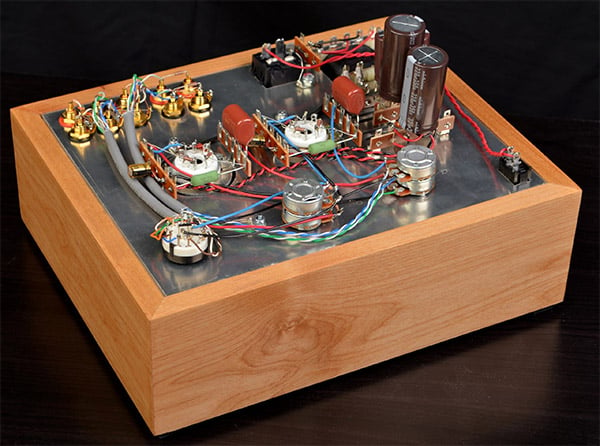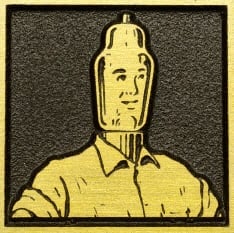Description
If you know about Bottlehead you probably know that our most popular kit for many years was the Foreplay preamp in its various iterations. The Foreplay had a great run, evolved into a higher priced preamp and then was retired several years ago. Since that retirement we have had many requests for an inexpensive but great sounding preamp to replace the original Foreplay. And here it is – the Moreplay preamp.
Moreplay is a retro-nod to our Foreplay preamp, which was our most popular kit of the late 90s and early 2000s. Foreplay was intended to be a basic and easy to build preamp to accompany our original S.E.X. amplifier kit which, at the time, was a power amp with no built in level control. Upon its introduction the Foreplay caught on as a “gateway drug” for those looking for an inexpensive but high quality sounding intro to tube sound and was often incorporated into a solid state system. The Foreplay eventually gained complexity and outgrew the “simple” preamp concept. A followup to it called Quickie was introduced a few years later. Quickie was a battery powered preamp using directly heated triodes. In spite of its superior sound and low price sales were mild. This was assumed most likely due to the battery powered nature of the kit. The BeePre 300B premium preamp was introduced a few years later and it set the bar for high end DHT preamps. Moving ahead a few years, a poll on the Bottlehead Forum indicated great enthusiasm for the reintroduction of a cost effective AC powered preamp that could be an easy entry into the world of tube audio. Paul Joppa and Paul Birkeland used their many years of experience with the previous designs and developed the Moreplay.

Preamps are simple things, at least in concept. The Moreplay is no exception; the gain stage is a single 6V6 beam tetrode, wired as a triode. But the devil is always in the details, and this preamp is no exception there, either. Many of those details were chosen to maximize the signal to noise ratio in a wide variety of situations. There are three pairs of inputs. A 3-position selector switches both signals and grounds, to help minimize the possibility of ground-current noises. The grounds are bypassed to the chassis with small capacitors to reduce radio-frequency noise pickup. The selector is followed by a balance control which feeds the input grid of the tube directly. That’s a little unusual – usually the volume control is at the input as well. In this preamp, the level control is moved to the plate (output) of the circuit, which results in a lower noise floor and a consistent sonic signature when used with highly sensitive amplifiers and/or speakers. The gain stage is very simple; just a triode with a resistor plate load and a bypassed cathode resistor for bias. The output is capacitor coupled to a low-resistance volume control. The power supply is a voltage doubler with two additional stages of resistor-capacitor filtering. The signal ground is connected to the chassis plate through a low-impedance ground-lift network to further reduce ground current noise. The power transformer can be wired for a variety of power-line voltages from 100v to 240v.
Gain: (with balance control centered) 9dB
THD: with 1V source signal, less than 1%
Bandwidth: -1dB from 23Hz-45kHz into load>100Kohms
Output impedance: less than 3.2Kohms at all levels. For 1V in/1V out, 2.1Kohms.
SNR: 65-80dB ref 1Vrms in and 1+Vrms out, depending on tubes used.


